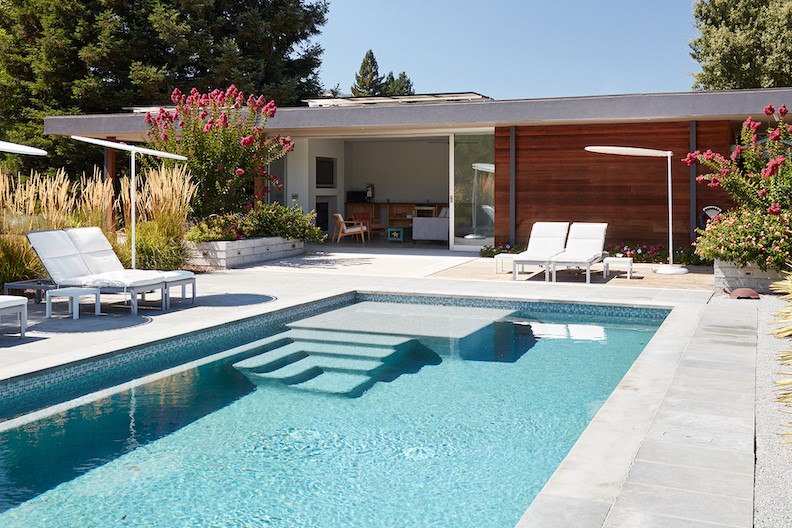By JoAnn Locktov
In 2009 art history scholar and painter Jacqueline Moore found herself “anxious, afraid, stunted in creativity, and at a crossroads.” A journey that had begun in England and brought her to Southern California, then led her one afternoon to a garden in Montecito.
She was strolling among lush plantings, breathing air fresh from a recent rain and captivated by what she considered “wee art works”: old hand painted tiles dotting the landscape. And she had an epiphany on that sunlit stroll. Using her extensive knowledge of art history, design and architecture, her virtuoso skill with a brush, her near-forensic study of materials, and her trust in her artistic voice, she began to create decorative tiles. An expert in restoration and conservation in decorative antiquity, her chosen substrate was wood, a material she knew intimately.
Working with tile industry veterans, Moore discovered the process that would enable her to create a durable tile in Baltic Birch, providing the canvas for her elegant painted imagery. With as many as 20 layers, each tile is interspersed with paints and sealants to protect surface and edges. Moore likens it to a “lasagna” effect, with striations creating an impermeable patina. She draws inspiration from the styles, movements and artists that captivate her imagination. She attributes her sense of balance and graceful proportion to a Palladian symmetry and draws courage from German Expressionism. Moore works viscerally, allowing patterns and colors to essentially “choose themselves.”
“Each tile is emblematic of an emotional response,” she says, “They don’t trace anything in particular, nor as a pictorial rendering of something existing somewhere else, but are in fact recordings, captures, of an emotional reaction to an experience.”
French 17th century painter Antoine Watteau figures prominently in her design choices, which harmonize spontaneity with detailed execution. The evidence of folly is seen in the Commedia Dell’Arte series, populated with Moore’s delightful characters. Each rustic wood tile with a worn gesso base is overlaid with a meticulous figure in Delft inspired blues with umber and ocher oil washes. The Monkey Harlequin prances into the Rococo of the 18th Century, an Italian Commedia meeting Singerie style by way of Tim Burton.
In the Rococo-Chinoiserie series her wood base is distressed, then painted with red underlay and black crackled topcoat. Worn gold leaf is applied to create borders and motifs. The Brighton tiles are atmospheric in mood with umber and ocher washes and a silver leaf ground coat. The delicate hand-painted botanical scenes are subtle and ephemeral. There is historical reverence in Moore’s textured interpretations. She believes the tiles are conceived in ”truth and fully-fledged joy” while their presentation is “nuanced, storied, worn and with tales to tell.” Listen closely.
For more on Jacqueline Moore, go to http://www.jacquelinemoore.com/
[slideshow id=435]


